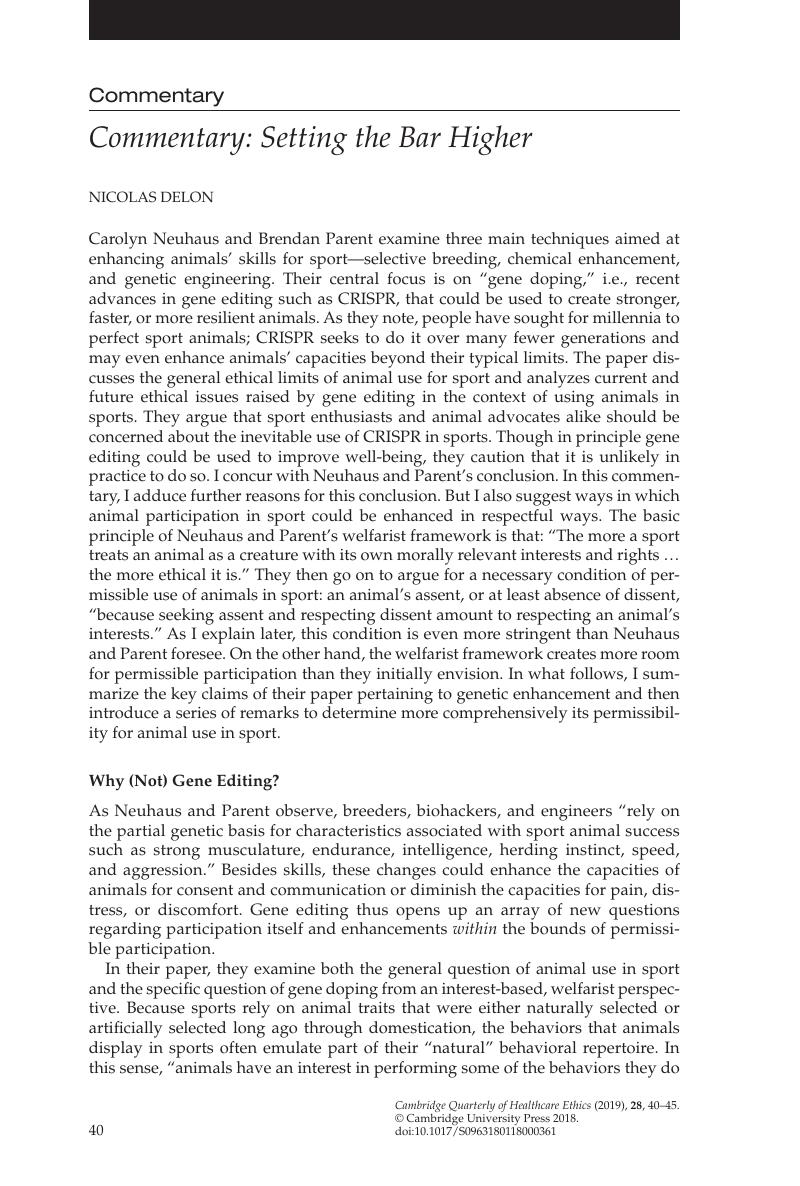No CrossRef data available.
Article contents
Commentary: Setting the Bar Higher
Published online by Cambridge University Press: 20 December 2018
Abstract

- Type
- Special Section: Genome Editing: Biomedical and Ethical Perspectives
- Information
- Copyright
- Copyright © Cambridge University Press 2018
References
Notes
1. On welfare-improving (including through dis-enhancement) genetic engineering of farmed animals, see Shriver A, McConnachie E. Genetically modifying livestock for improved welfare: a path forward. Journal of Agricultural and Environmental Ethics 2018;31(2):161–80.
2. See McMahan, J. The Ethics of Killing: Problems at the Margins of Life. New York: Oxford University Press; 2002.CrossRefGoogle Scholar
3. Ibid. and Nussbaum M. Frontiers of Justice: Disability, Nationality, Species Membership. Cambridge, MA: The Belknap Press; 2006.
4. See Gruen, L. Ethics and Animals: An Introduction. Cambridge: Cambridge University Press; 2011.CrossRefGoogle Scholar
5. Gary Varner’s idea of “domesticated partnerships” creates space for a welfarist analysis of permissible use of animals in sport, labor, and other forms of exercise. See Varner, G. Pets, companion animals, and domesticated partners. In: Benatar, D., ed. Ethics for Everyday. McGraw-Hill; 2002:450–75Google Scholar and Varner, G. A two-level utilitarian analysis of relationships with pets. In: Overall, C, ed. Pets and People: The Ethics of our Relationships with Companion Animals. New York: Oxford University Press; 2017:64–79.CrossRefGoogle Scholar
6. See Jamieson, D. Discourse and moral responsibility in biotechnical communication. In: Morality’s Progress. Oxford: Oxford University Press, 2002:308–20.Google Scholar On some epistemic problems and the transformative nature of CRISPR, see Delon N, Purves D. Wild animal suffering is intractable. Journal of Agricultural and Environmental Ethics 2018;31(2):239–60.
7. Interestingly, their analysis seems to apply equally well to the involvement of young children in sports and recreative activities. Indeed, I believe the ways we approach children’s participation in sports could be a model for approaching the case of animals (they lack the capacity for informed consent, they can engage in activities critical to their natural development of physical, social, and agential skills, and such activities consist, at least in part, in treating them as self-determining participants in their own right).
8. Donaldson, S, Kymlicka, W. Zoopolis: A Political Theory of Animal Rights. Oxford: Oxford University Press; 2011.Google Scholar
9. See Kymlicka, W. Social membership: Animal law beyond the property/personhood impasse. Dalhousie Law Journal 2017;40(1):123–55.Google Scholar
10. On work, for instance, Kymlicka writes: “Recognition of collegiality is precisely a membership relationship, and it carries with it membership claims, rather than claims to ‘humane use.’ Animals have always labored for us, but recognizing them as co-workers is new, and entails claims to shared membership of the workplace.” (Ibid., p. 149).




